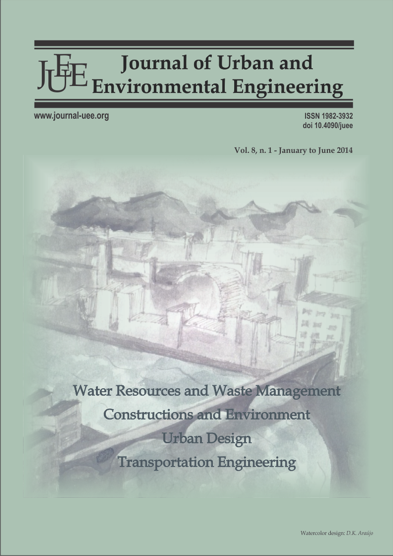SELF-CLEANING ABILITY OF THE MIDDLE AND LOWER COURSES OF THE UBERABA RIVER, UPGRH-GD8
DOI:
https://doi.org/10.4090/juee.2014.v8n1.118-133Keywords:
Self-cleaning, constants of biochemical reactions, sensitivity analysis, pollution scenario, Uberaba RiverAbstract
The multiple and balanced use of water resources has become a difficult task, since the implementation and continuous improvement of management systems still fail to keep abreast of the constant changes occurring in the environment due to human activities. Water planning and management on a river basin scale requires the use of computational tools that allow for joint modeling of water quantity and quality. This study involved an assessment of the self-cleaning ability of the middle and lower courses of the Uberaba River, located in the state of Minas Gerais, Brazil. This river is extremely important because its waters supply a population of approximately 322,500 distributed among the municipalities of Uberaba, Veríssimo and Conceição das Alagoas. The water quality parameters of dissolved oxygen, biochemical oxygen demand, organic nitrogen, ammonia, nitrate and total phosphorus were modeled for the period of October 2012 to September 2013, using the AQUATOOL system. The constants of biochemical reactions were calibrated by the trial and error method. The sensitivity analysis of the initially calibrated constants Ka, Kd, KNoa and KNai and of the quality parameters of the intermediate inputs did not reveal significant variations in water quality. In the analysis of pollution scenarios, considering the critical flow Q7,10, it was found that organic nitrogen, ammonia and nitrate remained within the levels established by Minas Gerais (2008) and Brazil (2005). The concentration of dissolved oxygen would have to increase by 156% when compared with the value of the driest month only in the intermediate input that comprises the entire urban area of the city of Uberaba, whose urban streams receive domestic and industrial effluents. On the other hand, the parameters BOD5 and Ptotal were the most problematic, with high values in almost all the intermediate inputs, except for the Jataí and Preguiça streams, whose subbasins have minor areas of contribution. This indicates that, in addition to the pollutant loads from the urban area of Uberaba, the use of 70.6% of the total land area of the Uberaba River subbasin for agricultural and pastureland purposes contribute to the high concentrations of BOD5 and Ptotal.Downloads
Download data is not yet available.
Downloads
Published
2014-10-15
Issue
Section
Articles




